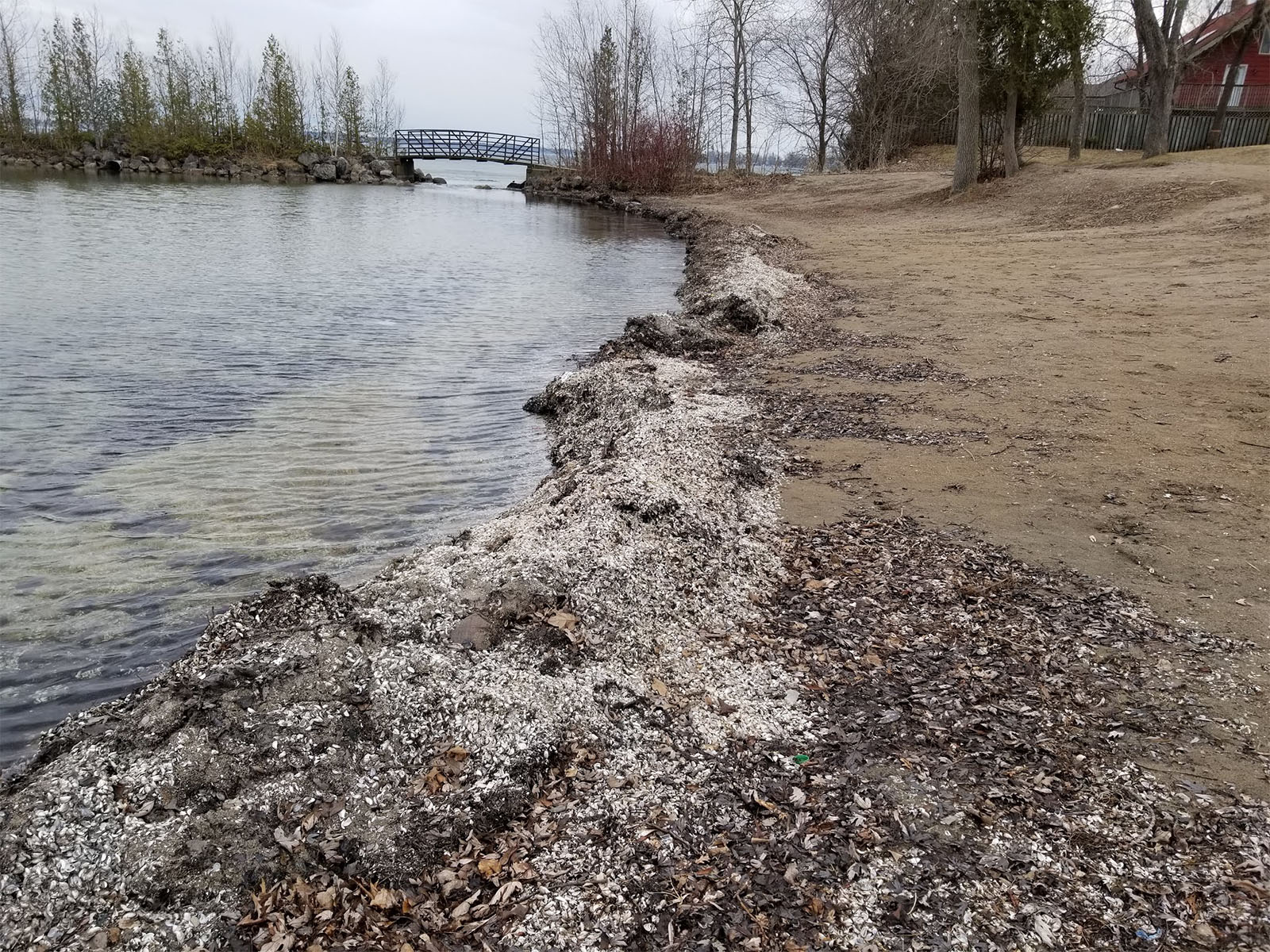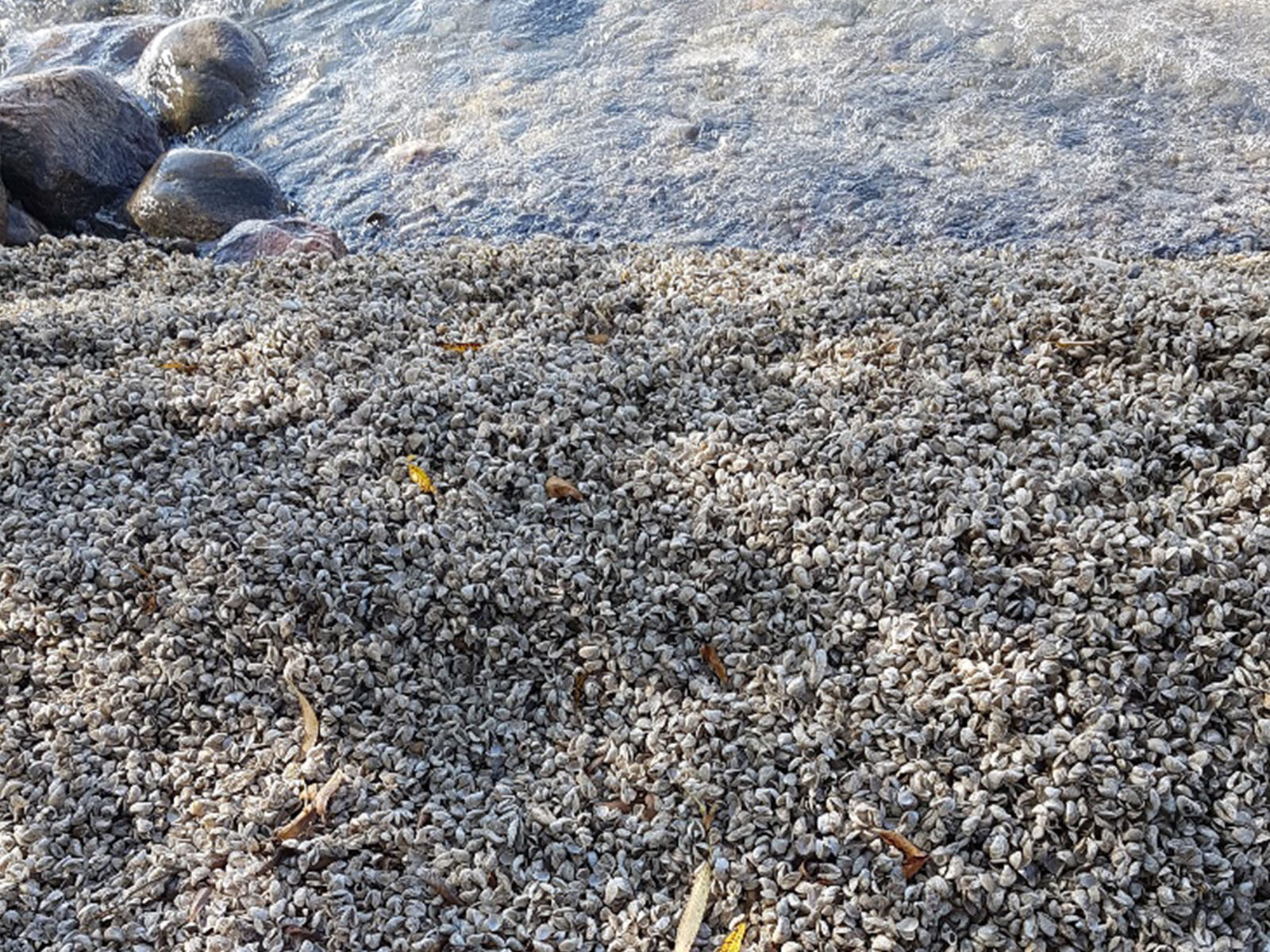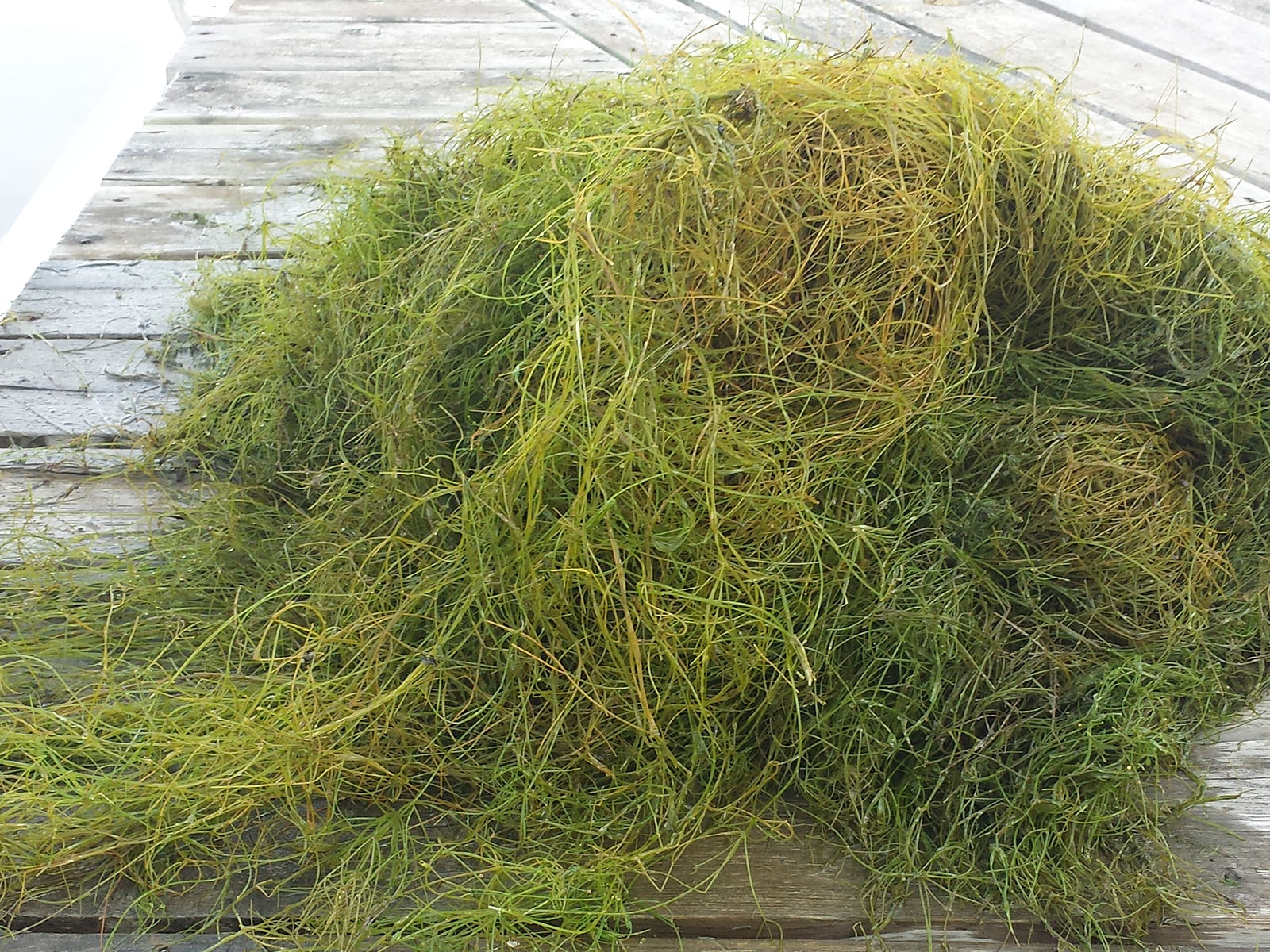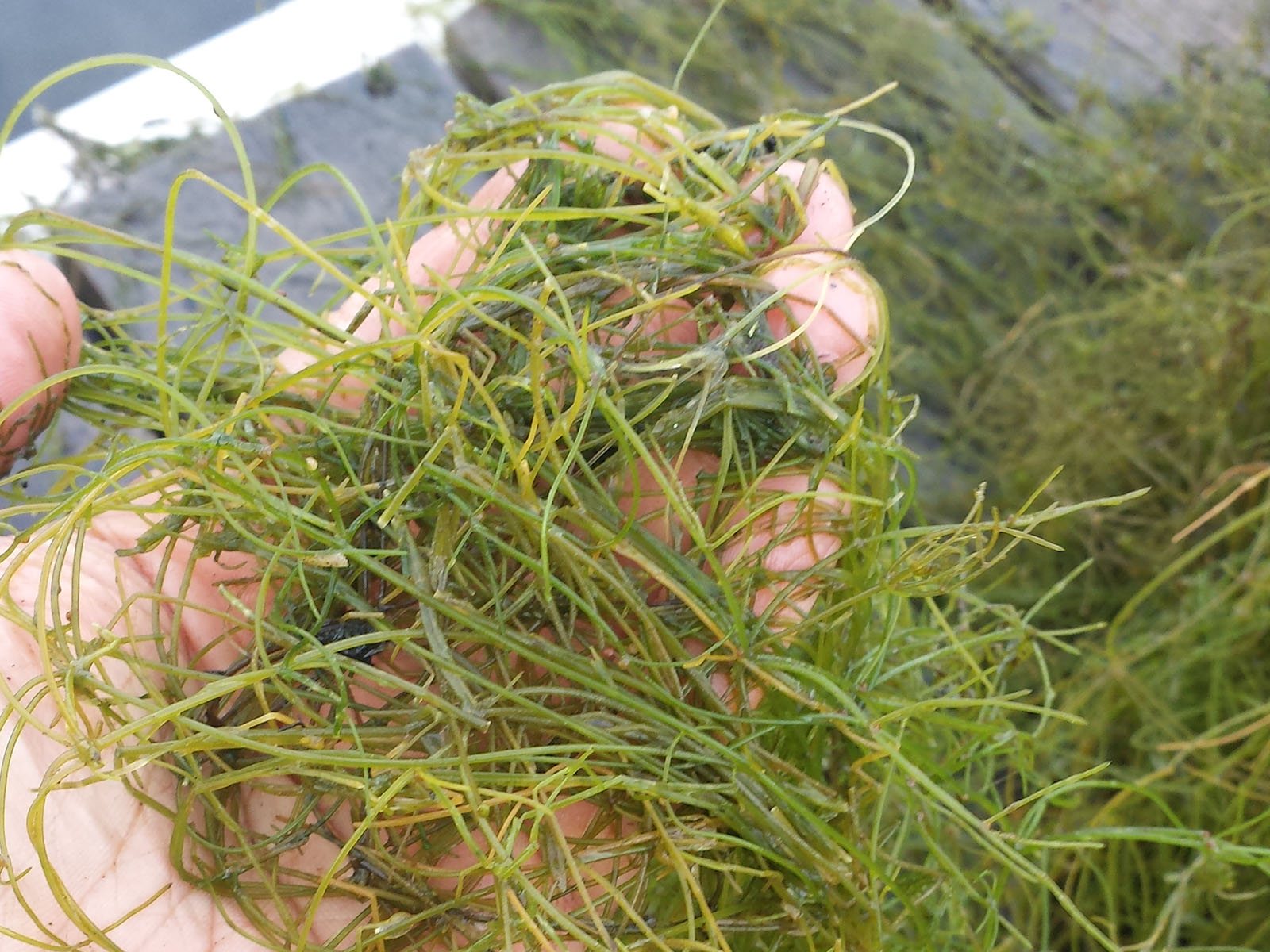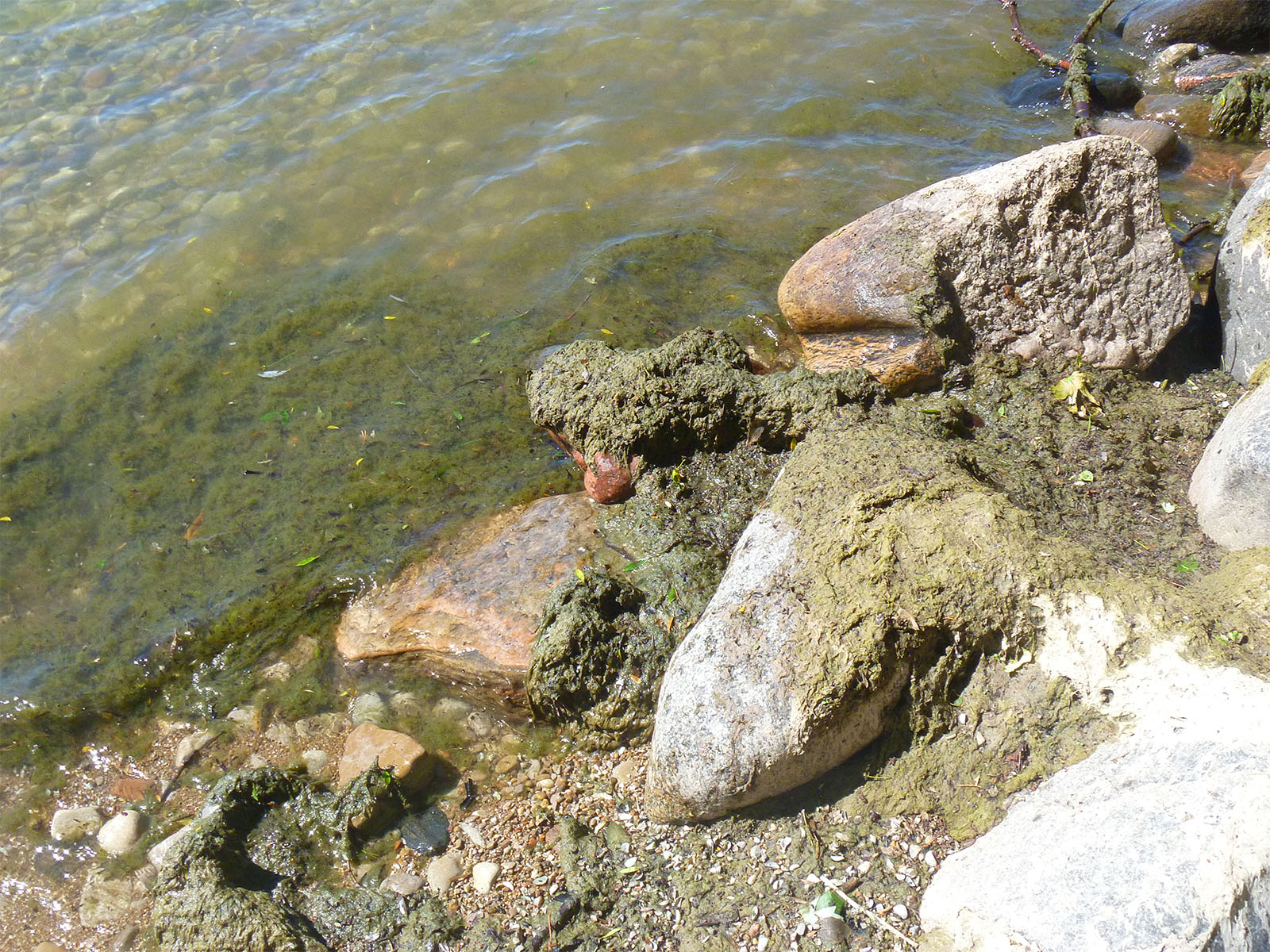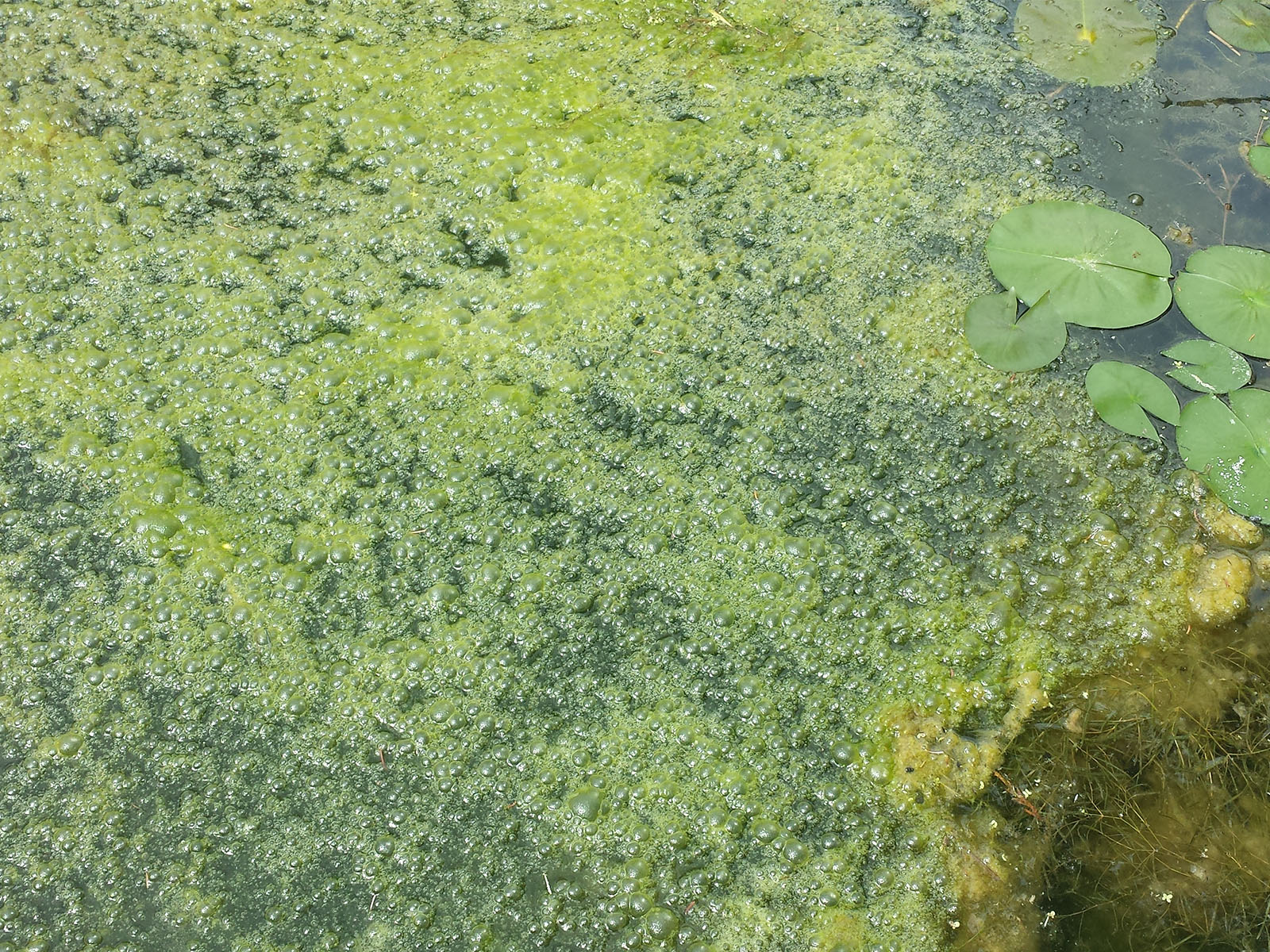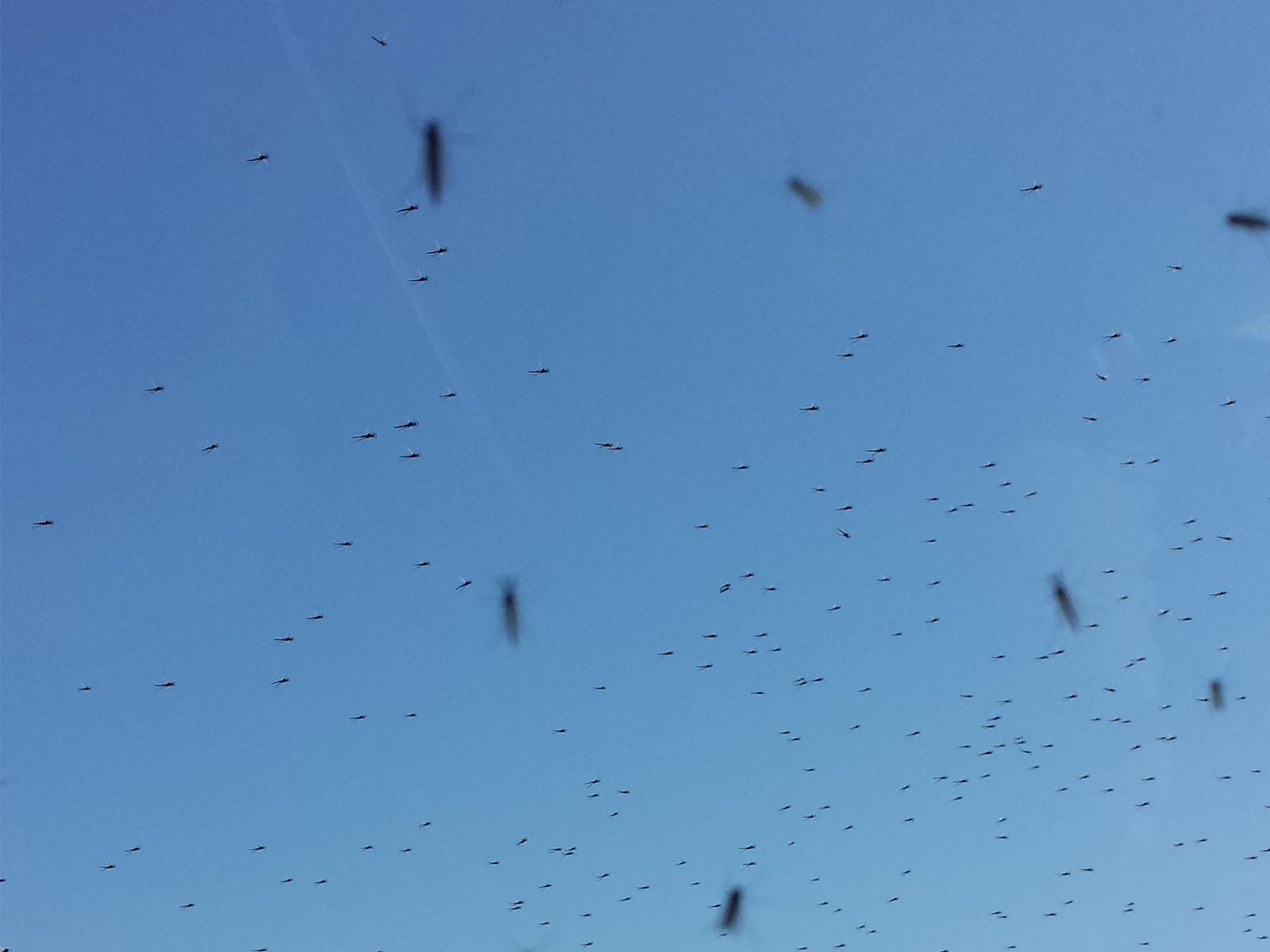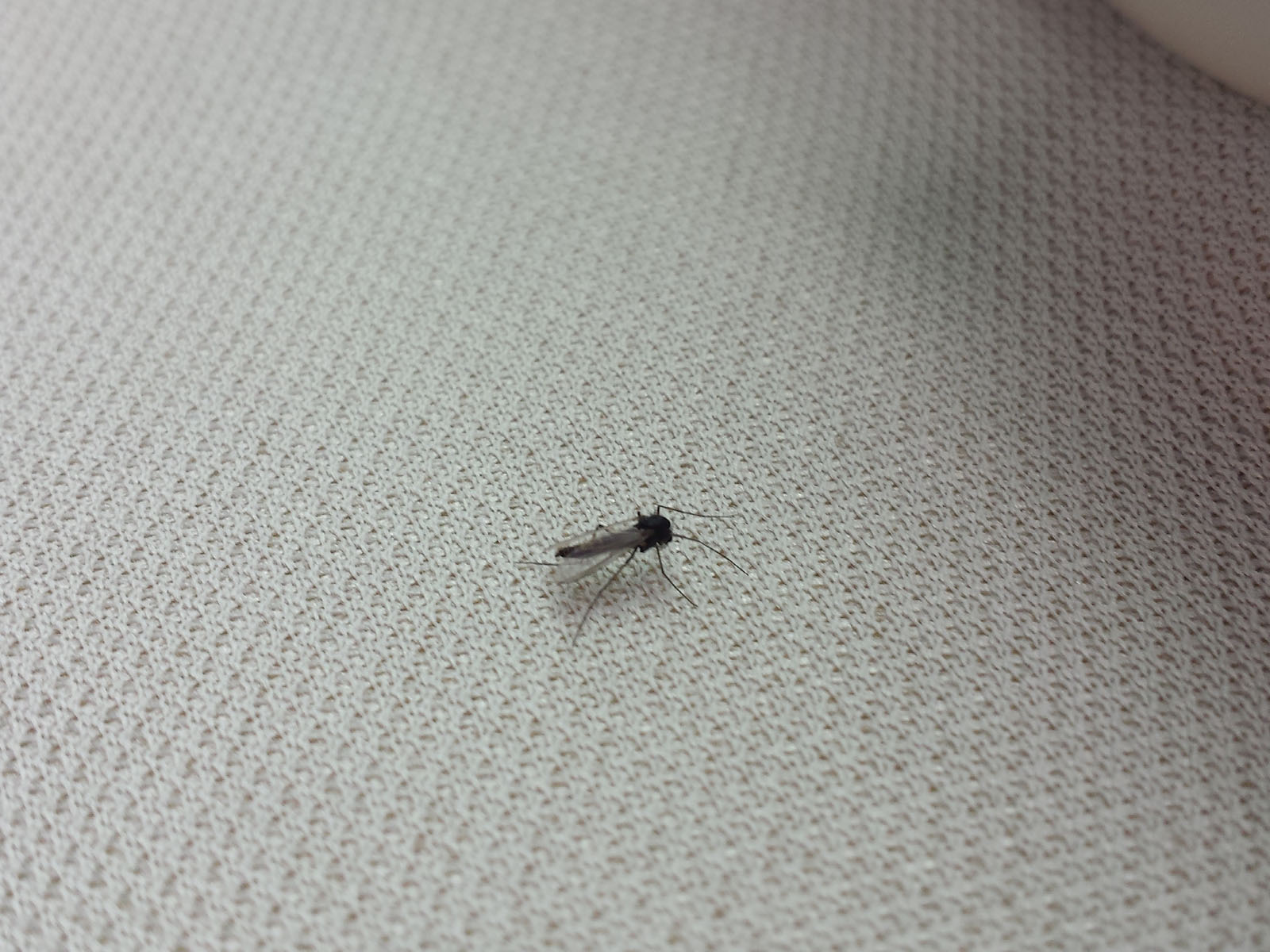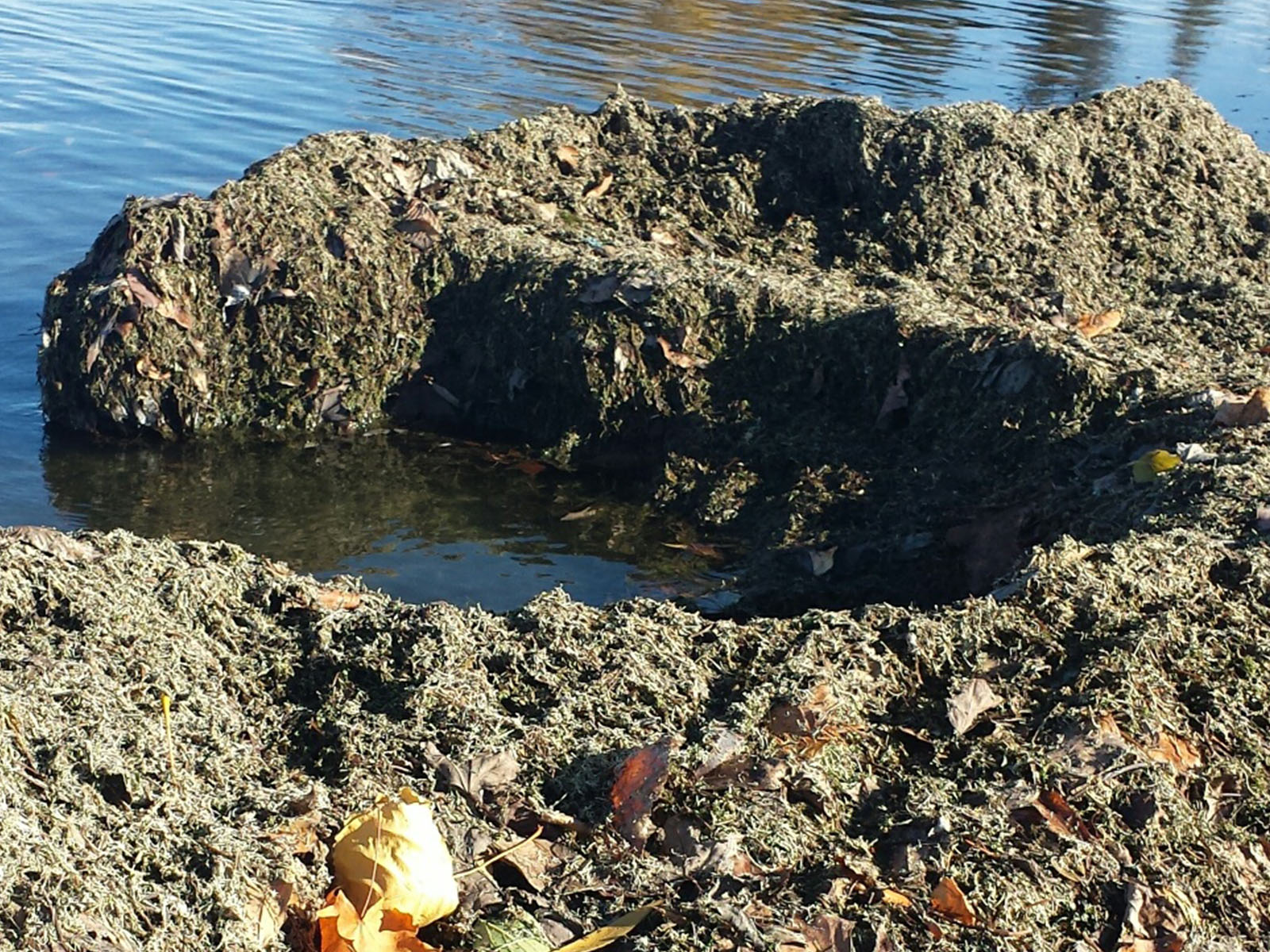Aquatic plants and algae
You may be wondering what you are seeing floating in Lake Simcoe, on its surface, or even along your shoreline. During the spring, summer and fall months it could be a variety of things, but most of what you are seeing is probably either aquatic plants or algae.
What’s the difference? Aquatic plants have roots, stems and leaves, characteristics that algae don’t have, but they both have chlorophyll and other pigments for carrying out photosynthesis similar to plants on land.
Each year we see varying amounts of aquatic plants and algae because their growth depends largely on the weather. If it’s sunny and hot, there will be more plant and algae growth, which means more wash ups on the shoreline and along the surface of the lake.
What you might see in your water
Algae Blooms
During the month of June, you’ll begin to see green algae in shallow ponds, ditches and among vegetation surrounding large lakes, generally growing free-floating. Some common types of green algae seen in our watershed include water silk and elephant snot.
Tree Pollen
This is likely from pine and will be most prominent during the spring months. It looks like a yellow film along the water’s surface. You will probably see this all over your vehicles, patio furniture and watch it blow through the wind.
Midge Swarms
Midge is a term used to refer to many species of small flies. They don’t bite, and are food for fish in the early spring! They like to hang out around water and light. You may run into them while walking through your yard or biking through the forest. The best way to avoid these little critters form hanging around is to avoid unneeded sitting water.
Aquatic Plant Wash Ups
Throughout the summer and fall, you will see different types of aquatic plants washing up on your shore. The sun and warm water, combined with nutrients, give us large amounts of plants, and years with hotter summers we see even more plants.
We need aquatic plants as they are a natural and necessary part of a healthy lake ecosystem and provide many benefits for aquatic life. They provide shelter, shade and protection for fish and their eggs. Plants slow the action of waves that erode the shoreline, provide calm areas for sediments to settle to the lake bottom, and their presence also helps protect against invasive plant species.
Zebra and Quagga Mussels
These are two of Lake Simcoe and many of Ontario’s lakes most well-known invaders. A single zebra or quagga mussel filters up to 4 litres of water per day, eating all the plankton that fish also need for food.
The introduction of the invasive zebra and quagga mussel has contributed to aquatic plant growth by increasing water clarity. Invasive mussels are incredibly good at filtering water. Although this might sound like a good thing, the increased clarity lets sunlight penetrate deeper into the water and all that sun encourages plant growth.
If they are a nuisance on your shoreline, you can remove them. You can stop the spread of these invasive species by inspecting your boat, trailer, and other recreational equipment when they have been in contact with water. Drain all bilge water, live wells, bait buckets, and all other water from your boat, engine and equipment. Also dry your gear – a quagga mussel can live up to 7 days out of water, or 30 days in a wet bilge!
Does LSRCA remove the plants or algae from shorelines?
No. Our approach is on a long-term strategy that focuses especially on phosphorus reduction to address excessive aquatic plant growth.
Can you remove plants from your shoreline?
Clearing them as they accumulate on your shoreline is fine, but uprooting them from the lakebed is not. You will likely end up making the problem worse by scattering fragments of the plants, which can take up root elsewhere. You are also potentially disturbing fish habitat and could be subject to fines for doing so. Fish habitat is legally protected by Fisheries and Oceans Canada.
Aquatic plants end up along the shoreline through the natural wave action in the lake. If you live along the east side of the lake, you’re more likely to find plants wash up along your shoreline because of the prevailing winds
What’s the cause of too many aquatic plants and algae?
The issue with too many plants along the shoreline is largely a result of two main issues: high phosphorus levels and water clarity.
Phosphorus is a naturally occurring element and is necessary to sustain life. However, too much phosphorus contributes to overgrowth. We have too much phosphorus in the lake largely because of human activities on the land. Increased urbanization, uncontrolled stormwater run-off and agriculture are some of the contributors.
Ways to reduce plant growth in Lake Simcoe
We can all work together to support a long-term approach through taking the following steps:
One of the simplest and most effective things you can do is to divert any water that runs off your property onto soil or grass, and away from paved surfaces. For instance, divert your downspouts on to grass and away from the driveway or install a rain barrel to collect water from your roof.
Why? Because run-off from hardened surfaces such as roads and driveways doesn’t always get treated before it ends up in the lake. Less water in our storm sewers means less pollution in the lake.
- When gardening, use mulch to save on watering, and use compost instead of commercial fertilizer.
- Plant native plants in your garden. Native plants are adapted to our climate and therefore need less water or fertilizer once established.
- If you must fertilize your lawn, look for phosphorus-free alternatives.
- Use household products that are phosphorus-free.
- If you’re on septic, make sure you’re undertaking regular maintenance.
- Help to prevent soil erosion. Don’t clear-cut vegetation, create steep slopes or mow to the water’s edge.
- The only realistic way of stopping invasive species is through prevention.
Questions about Lake Simcoe?
Looking for more information about weeds on your waterfront? Do you have specific questions about your shoreline in Innisfil, Keswick, Beaverton or anywhere else along Lake Simcoe? The Lake Doctor can help. Send your questions in the form below and we’ll help you figure out what’s happening on your beach.
Did you know Lake Simcoe is among the cleanest lakes in the Great Lakes Region?
Here are some quick facts:
- Its surface area is 722 square kilometres
- If you walked around its shoreline, you would travel 240 kilometres
- Its average depth is 15 metres, but it gets as deep as 42 metres near the mouth of Kempenfelt Bay
- The lake is part of a much larger system known as the Trent-Severn Waterway
- Lake Simcoe water levels are managed by Parks Canada


